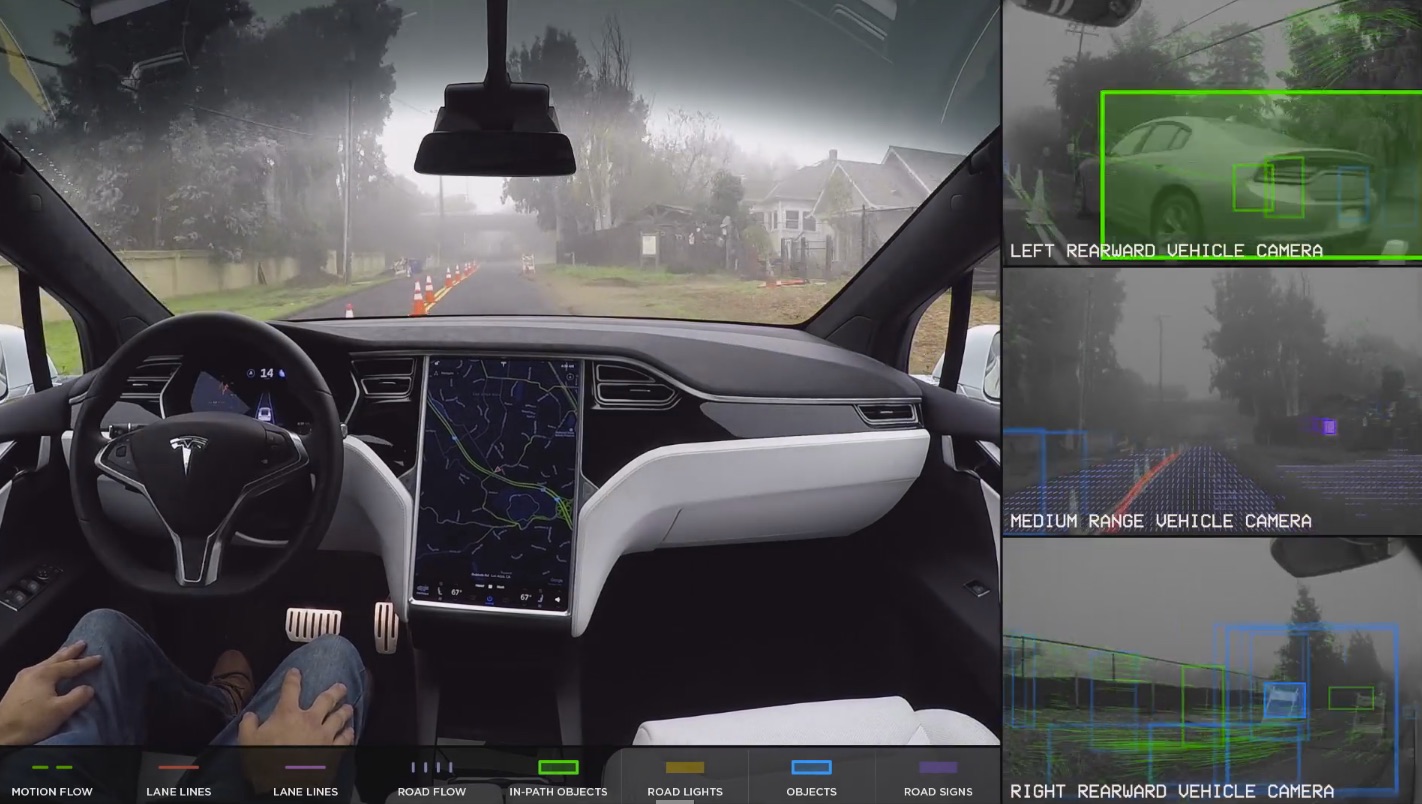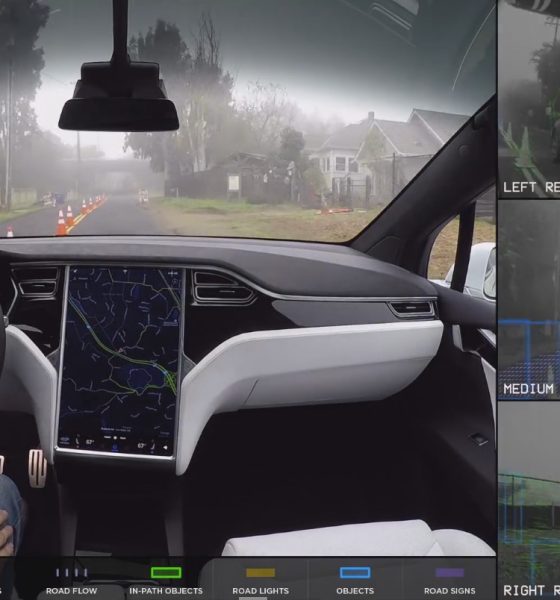

News
Netherlands ranks 1st in autonomous vehicle readiness, US places 3rd
The recently-released Automated Vehicles Readiness Index (AVRI) report by auditing firm KPMG has revealed that the Netherlands is the world’s most autonomous vehicle-ready country. The AVRI, which ranks nations across the globe according to their readiness for self-driving technologies, has also placed the United States in third place, right behind Singapore.
KPMG International evaluated countries according to four particular pillars. To make it to the index’s rankings, nations must perform well on policy and legislation, technology and innovation, infrastructure, and finally, consumer acceptance. The countries’ scores for each pillar are then aggregated and ranked.
Topping the list was the Netherlands, which was the clear world leader in the AVRI. The European nation ranked 1st in infrastructure, 2nd in consumer acceptance, 3rd in policy and legislation, and 4th in technology and innovation. The country’s aggregated score was 27.73 points, placing it well ahead of other nations in the index.
According to an EE Times report, the Netherlands’ impressive performance was attributed largely to its AV-friendly infrastructure. As of writing, the Netherlands boasts the highest density of electric vehicle charging points in the world. By 2016, the European nation already offered 26,789 charging points for the public. The country is also known for its well-maintained road network, which is currently rated as one of the world’s best.
In a statement to Geospatial World News, KPMG Netherlands Digital Advisory Manager Stijn de Groen noted that the country, even at this point, is already prepared for the upcoming autonomous vehicle revolution.
“The Dutch ecosystem for AVs is ready. The intensively-used Dutch roads are very well developed and maintained, and other indicators like telecoms infrastructure are also very strong. In addition, the Dutch government Ministry of Infrastructure has opened the public roads to large-scale tests with self-driving passenger cars and lorries,” the KPMG executive said, according to a GWN report.
AVRI’s second-placer on its rankings is Singapore, topping the list both in policy and legislation as well as consumer acceptance. According to KPMG, the Asian city-state received high marks in these pillars due to its recent amendment to its Road and Traffic Act, which allowed autonomous vehicles to be tested on public roads. Singaporeans were also found to be readily accepting of self-driving cars as a means of transportation.
Singapore also ranked 8th in technology and innovation and 2nd in infrastructure. The Asian city-state earned an aggregated score of 26.08 points.
The United States ranks third in the AVRI, despite ranking first in technology and innovation. Among all the countries in the index, the US earned near-maximum ratings on industry partnerships and research and development hubs, among other factors. The country’s overall score, however, was hampered by its low ratings on patents and overall usage of electric cars. The limited adoption and actual capabilities of fully autonomous vehicles also contributed to the country’s score.
Overall, the US ranked 7th in infrastructure, 10th in policy and legislation and 4th in consumer acceptance. The United States’ aggregated score in the AVRI is 24.75 points.
In a statement to GWN, KPMG US Infrastructure Advisory Principal Timothy D. Wilschetz noted that the country, while highly innovative in the autonomous vehicle sphere, still suffers from several setbacks. Wilschetz believes, however, that US regulators have the power to change this trend.
“The US has a highly innovative but largely disparate environment with little predictability regarding the uniform adoption of national standards for AVs. Therefore, the prospect of widespread driverless vehicles is unlikely in the near future. However, federal policy and regulatory guidance could certainly accelerate early adoption, particularly concerning limited freight applications such as truck platooning.”
Top 10 countries most prepared for the future of autonomous transportation by KPMG
- Netherlands
- Singapore
- United States
- Sweden
- United Kingdom
- Germany
- Canada
- United Arab Emirates
- New Zealand
- South Korea

News
Tesla FSD fleet is nearing 7 billion total miles, including 2.5 billion city miles
As can be seen on Tesla’s official FSD webpage, vehicles equipped with the system have now navigated over 6.99 billion miles.

Tesla’s Full Self-Driving (Supervised) fleet is closing in on almost 7 billion total miles driven, as per data posted by the company on its official FSD webpage.
These figures hint at the massive scale of data fueling Tesla’s rapid FSD improvements, which have been quite notable as of late.
FSD mileage milestones
As can be seen on Tesla’s official FSD webpage, vehicles equipped with the system have now navigated over 6.99 billion miles. Tesla owner and avid FSD tester Whole Mars Catalog also shared a screenshot indicating that from the nearly 7 billion miles traveled by the FSD fleet, more than 2.5 billion miles were driven inside cities.
City miles are particularly valuable for complex urban scenarios like unprotected turns, pedestrian interactions, and traffic lights. This is also the difference-maker for FSD, as only complex solutions, such as Waymo’s self-driving taxis, operate similarly on inner-city streets. And even then, incidents such as the San Francisco blackouts have proven challenging for sensor-rich vehicles like Waymos.
Tesla’s data edge
Tesla has a number of advantages in the autonomous vehicle sector, one of which is the size of its fleet and the number of vehicles training FSD on real-world roads. Tesla’s nearly 7 billion FSD miles then allow the company to roll out updates that make its vehicles behave like they are being driven by experienced drivers, even if they are operating on their own.
So notable are Tesla’s improvements to FSD that NVIDIA Director of Robotics Jim Fan, after experiencing FSD v14, noted that the system is the first AI that passes what he described as a “Physical Turing Test.”
“Despite knowing exactly how robot learning works, I still find it magical watching the steering wheel turn by itself. First it feels surreal, next it becomes routine. Then, like the smartphone, taking it away actively hurts. This is how humanity gets rewired and glued to god-like technologies,” Fan wrote in a post on X.
News
Tesla starts showing how FSD will change lives in Europe
Local officials tested the system on narrow country roads and were impressed by FSD’s smooth, human-like driving, with some calling the service a game-changer for everyday life in areas that are far from urban centers.

Tesla has launched Europe’s first public shuttle service using Full Self-Driving (Supervised) in the rural Eifelkreis Bitburg-Prüm region of Germany, demonstrating how the technology can restore independence and mobility for people who struggle with limited transport options.
Local officials tested the system on narrow country roads and were impressed by FSD’s smooth, human-like driving, with some calling the service a game-changer for everyday life in areas that are far from urban centers.
Officials see real impact on rural residents
Arzfeld Mayor Johannes Kuhl and District Administrator Andreas Kruppert personally tested the Tesla shuttle service. This allowed them to see just how well FSD navigated winding lanes and rural roads confidently. Kruppert said, “Autonomous driving sounds like science fiction to many, but we simply see here that it works totally well in rural regions too.” Kuhl, for his part, also noted that FSD “feels like a very experienced driver.”
The pilot complements the area’s “Citizen Bus” program, which provides on-demand rides for elderly residents who can no longer drive themselves. Tesla Europe shared a video of a demonstration of the service, highlighting how FSD gives people their freedom back, even in places where public transport is not as prevalent.
What the Ministry for Economic Affairs and Transport says
Rhineland-Palatinate’s Minister Daniela Schmitt supported the project, praising the collaboration that made this “first of its kind in Europe” possible. As per the ministry, the rural rollout for the service shows FSD’s potential beyond major cities, and it delivers tangible benefits like grocery runs, doctor visits, and social connections for isolated residents.
“Reliable and flexible mobility is especially vital in rural areas. With the launch of a shuttle service using self-driving vehicles (FSD supervised) by Tesla in the Eifelkreis Bitburg-Prüm, an innovative pilot project is now getting underway that complements local community bus services. It is the first project of its kind in Europe.
“The result is a real gain for rural mobility: greater accessibility, more flexibility and tangible benefits for everyday life. A strong signal for innovation, cooperation and future-oriented mobility beyond urban centers,” the ministry wrote in a LinkedIn post.
News
Tesla China quietly posts Robotaxi-related job listing
Tesla China is currently seeking a Low Voltage Electrical Engineer to work on circuit board design for the company’s autonomous vehicles.

Tesla has posted a new job listing in Shanghai explicitly tied to its Robotaxi program, fueling speculation that the company is preparing to launch its dedicated autonomous ride-hailing service in China.
As noted in the listing, Tesla China is currently seeking a Low Voltage Electrical Engineer to work on circuit board design for the company’s autonomous vehicles.
Robotaxi-specific role
The listing, which was shared on social media platform X by industry watcher @tslaming, suggested that Tesla China is looking to fill the role urgently. The job listing itself specifically mentions that the person hired for the role will be working on the Low Voltage Hardware team, which would design the circuit boards that would serve as the nervous system of the Robotaxi.
Key tasks for the role, as indicated in the job listing, include collaboration with PCB layout, firmware, mechanical, program management, and validation teams, among other responsibilities. The role is based in Shanghai.
China Robotaxi launch
China represents a massive potential market for robotaxis, with its dense urban centers and supportive policies in select cities. Tesla has limited permission to roll out FSD in the country, though despite this, its vehicles have been hailed as among the best in the market when it comes to autonomous features. So far, at least, it appears that China supports Tesla’s FSD and Robotaxi rollout.
This was hinted at in November, when Tesla brought the Cybercab to the 8th China International Import Expo (CIIE) in Shanghai, marking the first time that the autonomous two-seater was brought to the Asia-Pacific region. The vehicle, despite not having a release date in China, received a significant amount of interest among the event’s attendees.








